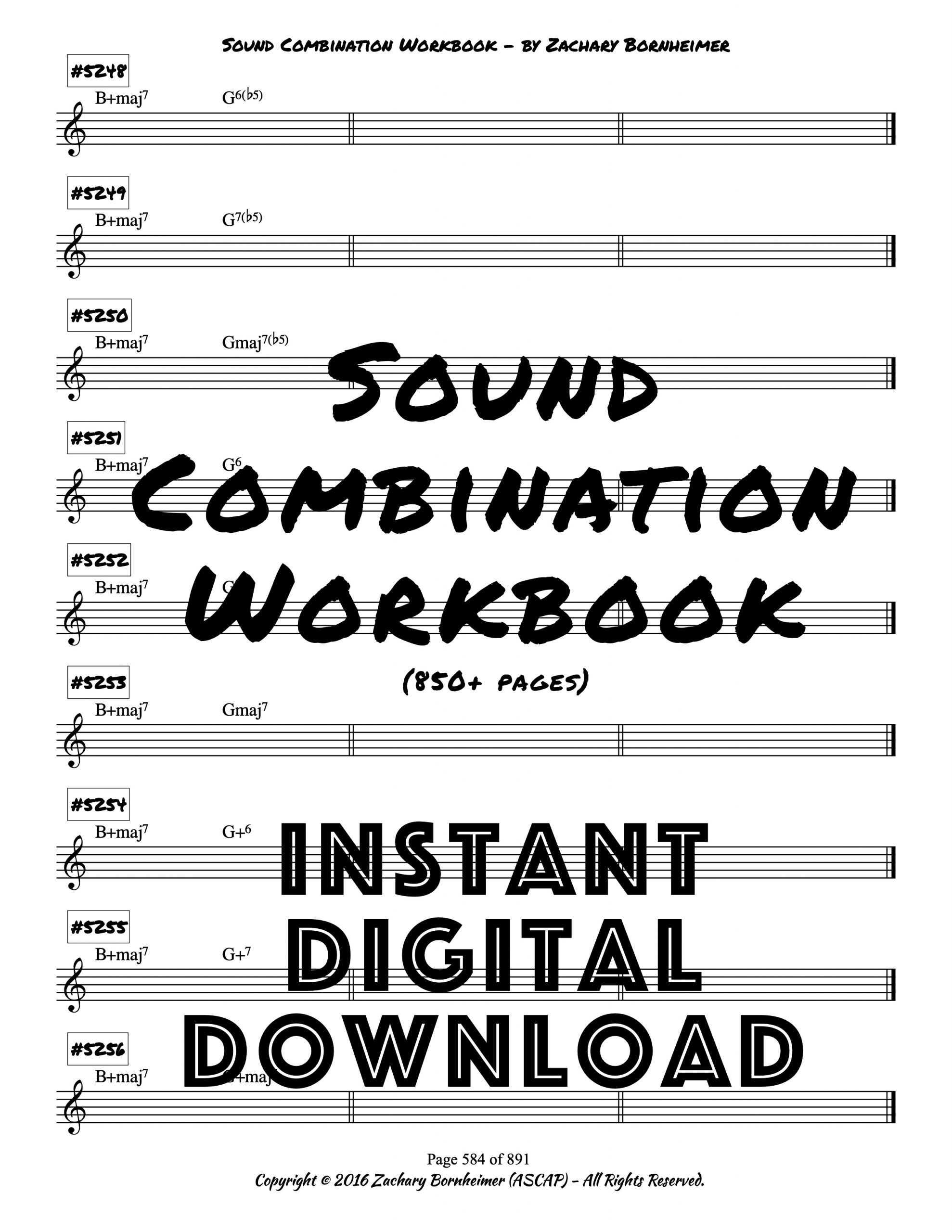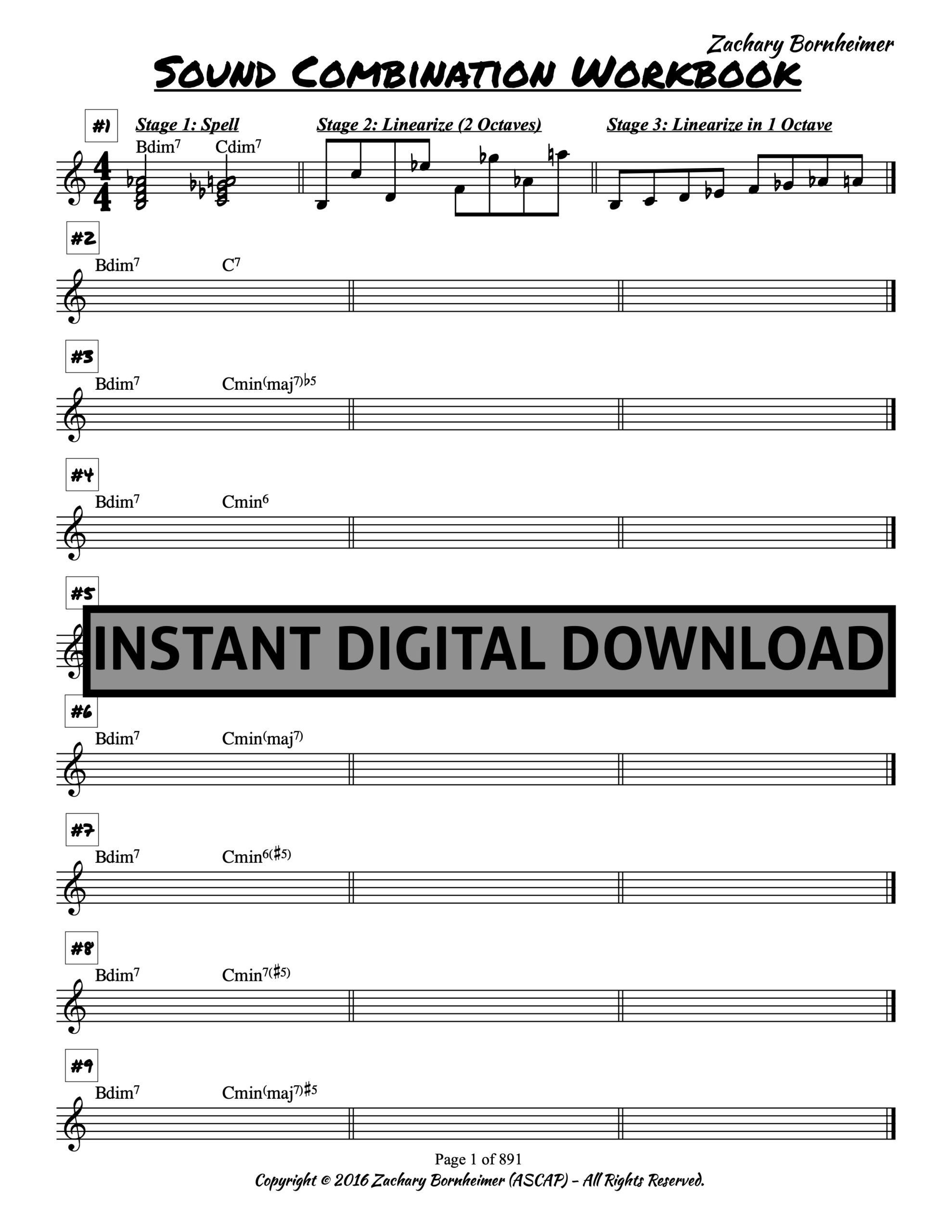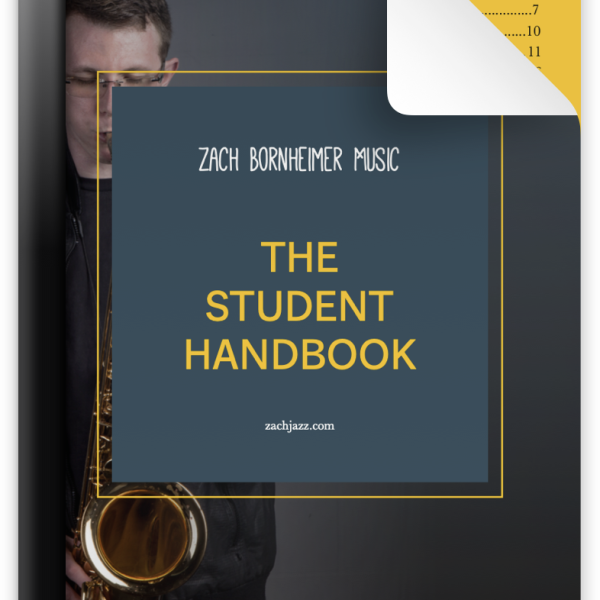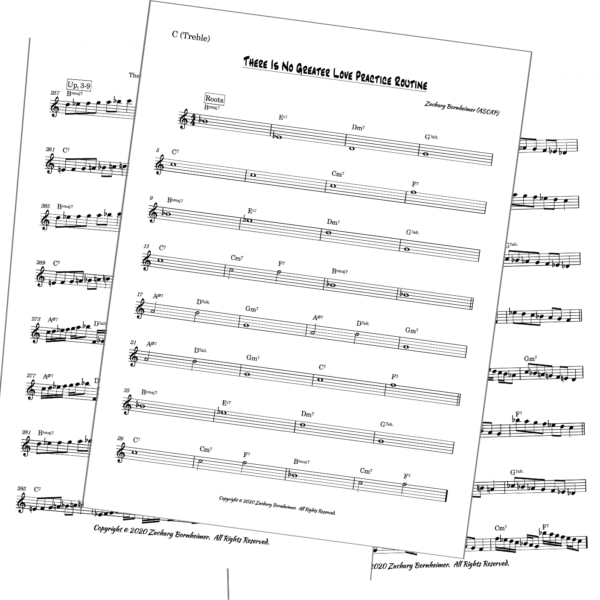Sound Combination Workbook
$12.99
Looking for a comprehensive way to practice and explore the often neglected world of 7th chord pairs? Look no further than this nearly 900 page workbook, which covers (just about) every possible theoretical 7th chord pair. From mechanical exercises to improvisational and technical practice, this workbook provides a structured way to improve your skills and take your improvisation to the next level. Recommended for use with a writing utensil or iPad, this workbook is perfect for musicians of all levels looking to expand their knowledge and capabilities. With a recommended schedule of 5 sounds per week, this workbook provides over 30 years worth of material to keep you engaged and motivated. So don’t be afraid to randomly choose sounds to work on and let your spontaneity shine – it’s what improvisation is all about.
Description
7th chord pairs unlocks a world of synthetic scales and unique internal structures and is often omitted by improvisers during practice. In this nearly 900 page workbook, (just about) every possibility theoretical 7th chord pair is explored.
We’d recommend practicing the book by:
- Read the instructions
- Choose a random page and start there
Click here for an example page.
From the introduction:
Mechanical
Do the following in the workbook with a writing utensil
Step 1: Spell each 7th chord
Step 2: Linearize the two 7th chord by putting each note in order, alternating octaves. That way you keep the integrity of each structure while starting to combine them.
Step 3: Linearize the two 7th chords and put them in the same octave to form a scale
_____________________________________________________________________
Improvisational
Step 1: Pick an exercise and do the mechanical portion
Step 2: Improvise using the 2 independent 7th chords (Stage 1) alternating between the 2 sounds. Be clear about the transitions, ensuring you can hear each sound.
Step 3: Improvise using the linearized 2 octave structure (Stage 2) ensuring that each sound stays in its own octave so you can hear the relationships between the sounds even in a more scalar form.
Step 4: Improvise using the linearized 1 octave scale (Stage 3). Get comfortable with the sound. If you recognize it as a mode of another scale, notate in the workbook what scale you hear and what mode it is.
Step 5: Play different modes of the scale. Identify the emotional and psychological nature of the scale. Is it stable? Is it happy? Is it symmetric? Does it feel “green” or “red?” Improvise and make sure that each mode seems unique and not like the parent scale. For example: D Dorian should sound like D Dorian not C Ionian.
Step 6: If you really like the sound and are planning on taking it through the technical section, play each stages 1-3 in 12 keys ensuring to define the sound before moving on to the next stage. Do 3 full stages before changing keys.
______________________________________________________________________
Technical
Step 1: Complete the mechanical and improvisational exercises for a particular scale. Once you determine that it’s a scale you really like the sound/feel of, play the scale over the full range of your instrument (including extended range). Do this with a metronome (using the time exercise perhaps).
Step 2: Practice the scale using the Scale Practice routine. This will take you through fluency in 12 keys.
Page II
Step 3: Practice deconstructing the Stage 3 scale into its Stage 1 & 2 forms. Go through the Improvisational method in 12 keys without referring to written notation.
In terms of schedule, I typically recommend 5 sounds a week. That gives you more than 30 years worth of work. Don’t be afraid to randomly choose sounds to work on. Spontaneity is what improvisation is all about.
Good luck and enjoy!
Zach Bornheimer









Reviews
There are no reviews yet.